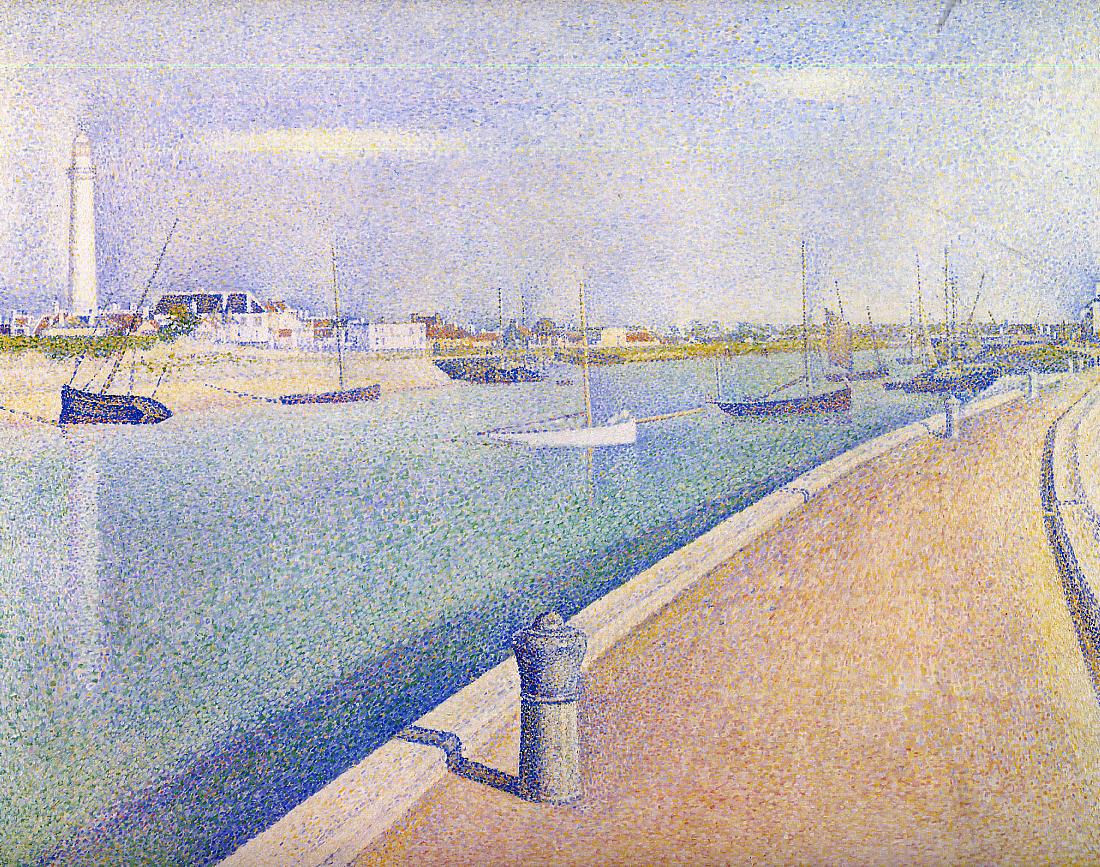impressionist-ART.com
Impressionism & Post-Impressionism
Georges Seurat - The Channel of Gravelines,
|
Johannes Vermeer - The Girl with a Pearl Earring 1665. It is not a portrait, but a ‘tronie’ – a painting of an imaginary figure. Tronies depict a certain type or character; in this case a girl in exotic dress, wearing an oriental turban and an improbably large pearl in her ear. ArtsViewer.com |
From Indianapolis Museum of Art:
Georges Seurat, the reclusive young pioneer of Neo-Impressionism who shocked Paris with his controversial new style and his ironic views of urban life, spent his summers painting wistful images of the sea. In 1890, he traveled to Gravelines, a small French port near the Belgian border, and painted four views that became the last seascapes of his brief life. In the Gravelines pictures, Seurat relied upon many of the scientific principles of optics and color perception that guided his approach to painting. The resolutely methodical artist applied his pigments in the small dots that have become the most familiar aspect of Neo-Impressionism.
In this canvas, Seurat carefully recorded the harbor's architecture, much of which is still recognizable today. He manipulated the positions of the small boats, deploying their horizontal and vertical elements to create the stable structure he routinely sought for his compositions. This taut framework supports the lightest of chromatic burdens, as Seurat chose subtly nuanced colors to transcribe the coastal atmosphere. Enhancing the luminous effect is a narrow border, painted directly on the canvas in contrasting hues. When contemporary critics claimed to see poetry in Seurat's approach, the artist replied, "I just paint my method." Viewing the radiant world of the Gravelines pictures, one is tempted to disagree.
